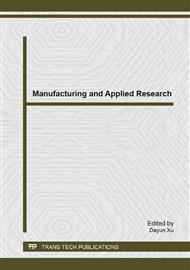p.397
p.405
p.410
p.418
p.423
p.428
p.433
p.439
p.444
Airborne Weather Radar Cloud Simulation Based on Fractal Theory
Abstract:
This paper describes a cloud simulation method of an airborne weather radar simulator based on the atmosphere characteristics of real clouds. With the fractal theory, an improved Successive Random Additions (SRA) to instruct cloud data modeling was chosen and an appropriate locus of control surfaces was selected. On the basis of the locus of control surfaces and the surface generated in the way of fractal this surface, weighted fusion generated a predetermined shape of the cloud data model. According to the generating rules, the data model was mapped to color values in the corresponding points, and the corresponding relation between height and color values was constructed. Finally, the screen cloud image of the airborne weather radar was drawn. The implementation shows that the method is real time and can be used to generate satisfied simulation radar image.
Info:
Periodical:
Pages:
423-427
Citation:
Online since:
March 2014
Authors:
Keywords:
Price:
Сopyright:
© 2014 Trans Tech Publications Ltd. All Rights Reserved
Share:
Citation:


